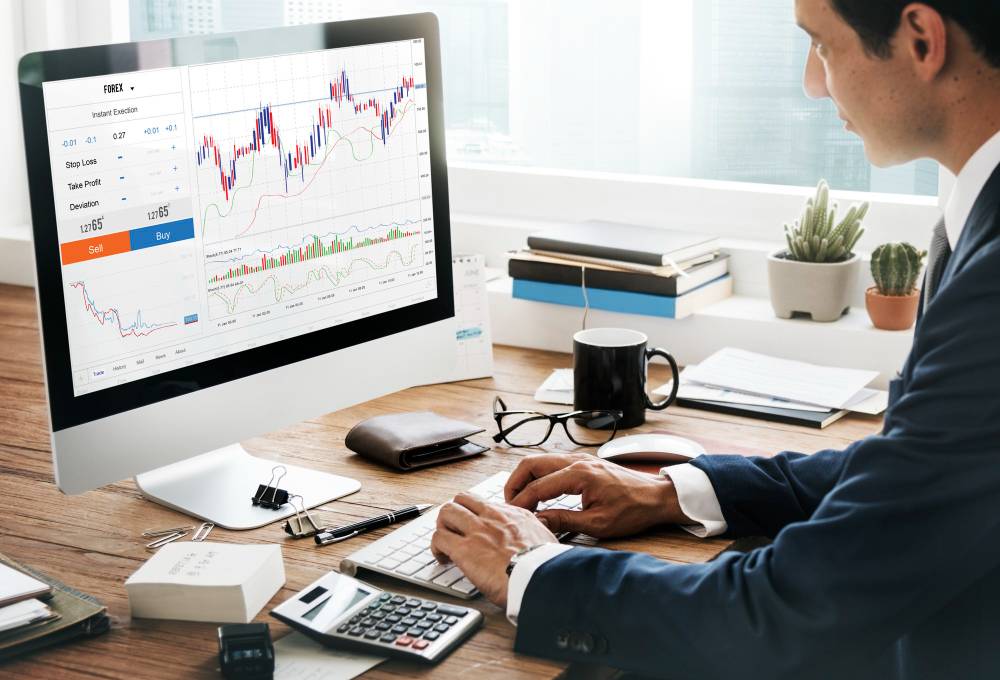Transforming Forex Trading Through Machine Learning: A New Era of Real-Time Analysis
In the high-stakes environment of Forex trading, the ability to anticipate market trends is critical for success. Enter machine learning—an innovative technology that is dramatically changing the way we interpret real-time Forex data. Utilizing sophisticated algorithms and extensive datasets, machine learning empowers traders to forecast currency movements with a level of precision previously thought unattainable.
As we delve into the intricacies of this topic, we’ll examine how machine learning is redefining our methodologies for analyzing the Forex market. From spotting trends to making rapid trading decisions, this technology is undeniably altering the trading landscape. Join us as we discover the influence of machine learning on real-time Forex market analysis and explore its implications for traders around the globe. While sophisticated technology plays a pivotal role in Forex, other investment avenues, such as emerging cryptocurrency projects—particularly coins priced under $5—are attracting increasing interest for their high-return potential.
A Closer Look at Machine Learning in Forex Market Analysis
Defining Machine Learning and Its Core Principles
Machine learning comprises algorithms designed to recognize data patterns and forecast outcomes. Fundamental concepts include supervised learning, unsupervised learning, reinforcement learning, and neural networks, each offering distinct approaches to data analysis and prediction.
The Essentials of Forex Market Analysis
Forex market analysis focuses on evaluating historical and current data to predict currency fluctuations. Key analytical methods encompass technical analysis, fundamental analysis, and sentiment analysis. For traders seeking in-depth insights, platforms like Altsignals.io provide specialized services, including Gold Signals Groups, which deliver expert signals and strategies aimed at maximizing Forex returns.
Advantages of Incorporating Machine Learning in Real-Time Forex Analysis
Machine learning is revolutionizing real-time Forex analysis by adding a level of accuracy and efficiency that was previously out of reach. Let’s explore the primary advantages.
Enhanced Predictive Accuracy
Machine learning algorithms dramatically improve predictive accuracy by analyzing extensive datasets to identify nuanced trends often overlooked by human analysts. Employing techniques like supervised learning, these models are trained on historical data to reliably forecast future market movements. Continuous model refinement leads to increasingly reliable predictions, resulting in better-informed trading strategies and improved profit potential.
Increased Speed and Efficiency
The adoption of machine learning accelerates the analysis of Forex markets. Algorithms can process vast amounts of data in mere seconds, enabling traders to respond quickly to market shifts. This capability not only helps capture fleeting opportunities but also optimizes entry and exit strategies. With increased efficiency, traders can devote more time to strategic decision-making rather than manual data handling, resulting in a comprehensive market understanding.
Strengthened Risk Management
Integrating machine learning into Forex trading enhances risk management practices. Sophisticated algorithms assess risks by analyzing historical data, current market conditions, and predictive metrics. This enables traders to establish accurate stop-loss orders and determine position sizes, ultimately minimizing potential losses. Additionally, predictive models can anticipate negative market movements, allowing for proactive adjustments. Overall, machine learning significantly improves our ability to navigate volatile markets, leading to safer trading experiences.
Key Machine Learning Techniques in Forex Analysis
Supervised Learning
Supervised learning trains models on labeled data, enabling predictions of future currency movements based on historical Forex performance. Linear regression models are often utilized to identify key trends and correlations.
Unsupervised Learning
Unsupervised learning seeks to reveal hidden patterns in data without labeled inputs. Techniques like k-means clustering group similar currency pairs, unveiling relationships within the Forex ecosystem that may otherwise go unnoticed.
Reinforcement Learning
Reinforcement learning employs a reward-based system to optimize decision-making algorithms for trading. By learning from feedback derived from market performance, models can effectively improve trading strategies over time.
Real-World Implementations and Outcomes
Success Stories from Forex Traders
Many Forex traders have harnessed machine learning to refine their trading strategies and market analysis. Prominent firms like Citadel LLC and Renaissance Technologies exemplify the successful application of machine learning algorithms to anticipate price movements and enhance trade execution.
Measuring Performance and Results
The introduction of machine learning to Forex analysis has yielded significant improvements in performance metrics, including accuracy, speed, and profitability. Traders report enhanced predictive capabilities, quicker response times, and increased profit margins, which bolster their overall risk management and decision-making processes.
Challenges and Limitations
Despite its advantages, machine learning in Forex analysis faces several hurdles.
Data Quality and Accessibility
Effective machine learning models depend on high-quality, real-time data. Inconsistent or outdated data can lead to flawed predictions, and sourcing robust datasets can be both expensive and time-consuming.
Interpretability of Models
Understanding the predictions generated by machine learning models can be challenging. Black-box models, such as those used in deep learning, provide limited insight into their decision-making processes, potentially undermining trust and regulatory compliance.
Algorithmic Trading Risks
While machine learning enhances trading efficiency, it does not eliminate risk. Flawed algorithms can lead to significant financial losses, and excessive reliance on automated systems can exacerbate market volatility during unpredictable events.
The Future of Machine Learning in Forex Analysis
As machine learning continues to evolve, its influence on real-time Forex market analysis will only grow. Here are some emerging trends to watch.
Advanced Algorithms and Techniques
Innovative algorithms, including deep learning and neural networks, are enhancing market prediction accuracy. These technologies improve pattern recognition capabilities, facilitating more reliable forecasting and trading strategies.
Integration with Cutting-Edge Technologies
Combining machine learning with blockchain and big data analytics holds promise for delivering more intricate market insights. This integration could enhance transparency and data precision—both vital for effective real-time decision-making in Forex trading.
Conclusion
Machine learning is transforming the landscape of real-time Forex market analysis, offering unmatched speed and accuracy. By leveraging groundbreaking algorithms and integrating with emerging technologies like blockchain and big data, traders can expect increasingly precise forecasts and streamlined decision-making. Although challenges persist, the benefits of machine learning far outweigh the drawbacks, solidifying its role as an essential tool for contemporary Forex traders. As we advance and refine these technologies, the future of Forex trading appears brighter than ever.




